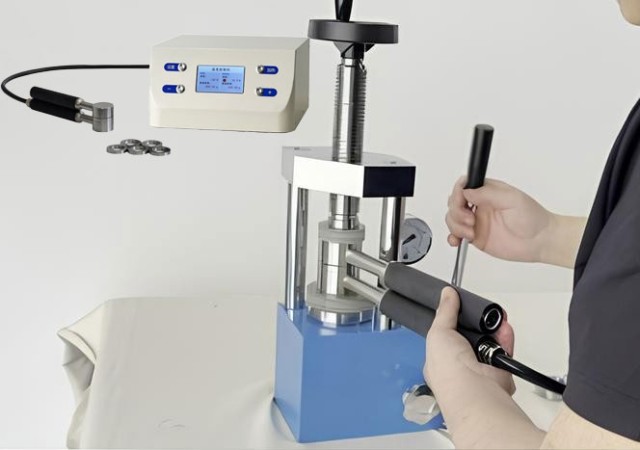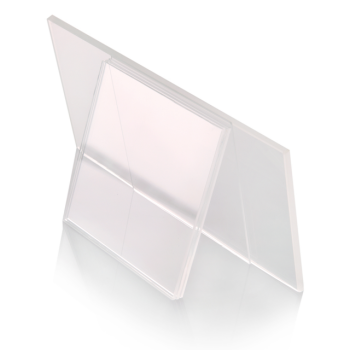Introduction to Infrared Heating Quantitative Flat Plate Molds
Infrared heating quantitative flat plate molds represent a cutting-edge solution in industrial heating processes, offering a distinct advantage over traditional methods. This technology leverages the principles of infrared radiation to achieve superior heat distribution and processing efficiency. Unlike conventional heating techniques, infrared heating molds are designed to provide a more controlled and uniform heating environment, essential for various high-precision applications across industries such as dental, heat treatment, and vacuum systems. This article delves into the advanced design features, operational mechanisms, and the multitude of benefits that infrared heating flat plate molds bring to the table, underscoring their significance in modern manufacturing and processing technologies.
Design Features of Infrared Heating Flat Plate Molds
Infrared heating flat plate molds are engineered with precision to ensure optimal performance and durability. These molds are constructed using high-quality sheet steel, which is essential for maintaining the structural integrity and thermal efficiency of the heating plates. The choice of materials is not arbitrary; it is based on the certified chemical composition that ensures the steel meets stringent quality standards.
The ultrasonic homogeneity verification process is a critical step in the manufacturing of these molds. This non-destructive testing method confirms that the steel sheets are free from defects and have a uniform structure, which is crucial for consistent heat distribution across the heating plates. Uniform heat distribution is key to preventing hotspots and ensuring that the products manufactured using these molds have consistent quality.
The design of the heating plates includes drilled and milled channels that facilitate the flow of the heating medium, which could be thermo-oil, water, or steam. These channels are interconnected to form a comprehensive heating field. The strategic arrangement and the diameter of these channels are meticulously calculated to provide efficient heating and maintain a steady temperature on the working surface of the plate. This design feature is instrumental in achieving uniform heating, which is essential for the quality and consistency of the products being manufactured.
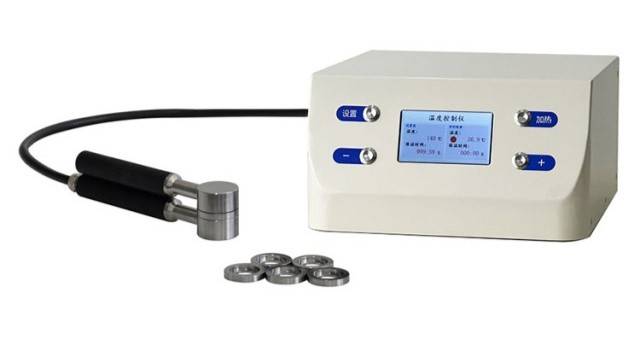
High-quality material and waterproof welds are integral to the construction of these heating plates. The welds are designed to be waterproof to prevent any leakage of the heating medium, which could compromise the performance and safety of the system. All plates undergo rigorous testing for water permeability under adequate pressure to ensure they are leak-proof and ready for long-term, reliable operation.
The machining of these heating plates is of the highest quality, providing an appropriate working surface and ensuring the smoothness of the heating plates. Smooth surfaces are not only easier to clean and maintain but also help in maintaining uniform heat distribution. The precision machining also contributes to the overall efficiency of the heating process, reducing energy consumption and improving productivity.
In summary, the design features of infrared heating flat plate molds are focused on using high-quality materials, ensuring uniform heat distribution, and maintaining long-term reliability. These features make them an ideal choice for industries requiring precise temperature control and consistent product quality. The combination of certified materials, ultrasonic homogeneity verification, and precision machining results in a robust and efficient heating system that meets the high standards of modern manufacturing processes.
Heating Mechanism and Efficiency
The heating mechanism in laboratory and industrial plates involves the strategic drilling and milling of channels to facilitate the flow of a heating medium, such as thermo-oil, water, or steam. These channels are intricately interconnected, creating a comprehensive heating field that ensures efficient heat transfer and maintains a steady temperature on the working surface of the plate.
Design and Functionality
The design of these channels is critical to the efficiency of the heating process. For instance, in a 10 daylight press with platens measuring 270 cm x 144 cm, the average steam consumption typically ranges from 180 to 275 kg/hr. However, during high-demand scenarios, such as loading heavy charges of hardwood veneer assemblies, the steam requirement can surge to over 450 kg/hr. This necessitates a robust heating mechanism that can maintain uniform temperatures across the platen area, achieved through precise temperature control equipment or steam pressure regulation.
Efficiency of Heat Transfer
The efficiency of heat transfer is paramount in ensuring that the working surface of the plate remains at a consistent temperature. The channels in the plate are designed to minimize temperature drops and ensure that the steam condenses uniformly across the platen area. This uniformity is crucial for preventing localized overheating or underheating, which can adversely affect the quality of the materials being processed.
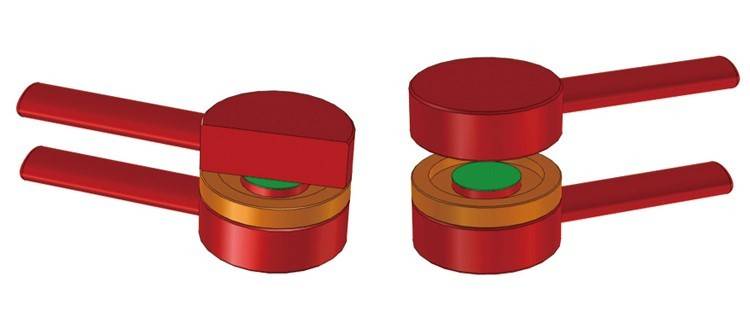
Challenges and Solutions
One of the major challenges in heating mechanisms is the condensation of steam within the channels of the platens. As a condensing layer forms, it acts as an insulator, potentially disrupting the efficient transfer of heat from the condensing steam to the platen surface. This can lead to significant temperature drops, particularly on the underside of the platens. To mitigate this, advanced heating technologies, such as those involving rotor blades and intense heat and mass transport, are employed. These technologies enhance heat transfer performance, prevent deposit formation, and protect temperature-sensitive products from overheating.
Material and Construction
Heated plates are constructed from high-quality sheet steel, with certified chemical compositions and verified ultrasonic homogeneity. The plates are meticulously machined to ensure appropriate working surfaces and smoothness, which are essential for maintaining efficient heat transfer. Waterproof welds and rigorous testing for water permeability under adequate pressure ensure the long-lasting and reliable operation of the plates.
Indirect Heating Methods
While direct electric heating is used in some applications, it often suffers from non-uniform temperature distribution and potential burnout issues. Indirect heating methods, such as those involving hot runners and heat-conducting oil heaters, are employed to overcome these shortcomings. Although they may result in slightly higher heat loss, the overall impact on efficiency is minimal, and the benefits of uniform heating and improved temperature control are significant.
Conclusion
The heating mechanism and efficiency of laboratory and industrial plates are critical to their performance and the quality of the materials processed. By employing advanced design principles, high-quality materials, and innovative heating technologies, these plates ensure efficient heat transfer and maintain a steady temperature on the working surface, thereby enhancing overall productivity and product quality.
Benefits of Using Infrared Heating Flat Plate Molds
Infrared heating technology has revolutionized the manufacturing industry, particularly in the realm of flat plate molds. This advanced heating method offers numerous advantages over traditional heating techniques, enhancing both the efficiency and quality of production processes. Below, we delve into the key benefits of employing infrared heating in flat plate molds.
Long-lasting and Reliable Operation
One of the primary benefits of infrared heating flat plate molds is their durability and reliability. Unlike conventional electric heating elements that can burn out or degrade over time due to uneven temperature distribution, infrared heaters operate with consistent performance. The technology involves the direct application of heat through infrared radiation, which penetrates the material surface without causing physical wear on the heating elements. This results in a significantly longer operational lifespan for the equipment, reducing the need for frequent maintenance or replacement.
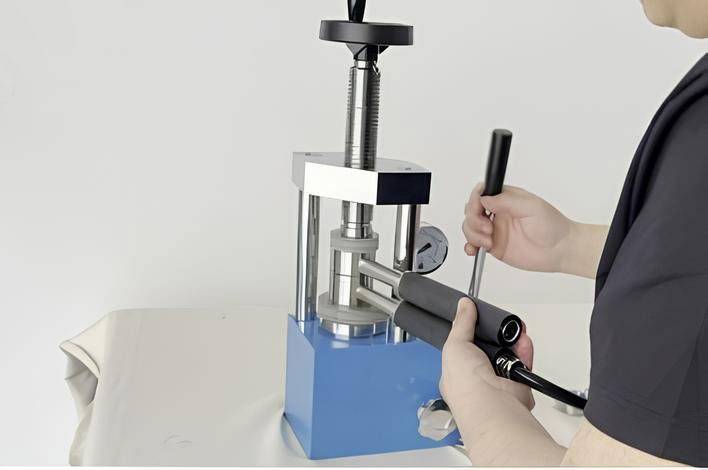
Uniform Heat Distribution
Infrared heating provides exceptional uniformity in heat distribution, which is crucial for maintaining consistent product quality. Traditional heating methods often suffer from temperature gradients, where the heat is concentrated in certain areas, leading to uneven curing or processing of materials. Infrared heaters, however, emit a consistent wave of heat that uniformly covers the entire surface of the mold. This uniformity ensures that every part of the material being processed receives the same amount of heat, leading to more predictable and reliable outcomes.
Increased Efficiency
The efficiency of infrared heating flat plate molds is another significant advantage. This technology allows for rapid heating and cooling cycles, which are essential for high-volume production environments. The quick response time of infrared heaters means that production lines can be started up quickly, and adjustments in temperature can be made instantaneously. This not only saves time but also reduces energy consumption, as the system does not need to operate at idle or waste energy maintaining unnecessary heat levels.
Lower Power Consumption
Infrared heating systems are designed to be energy-efficient, which translates to lower operational costs for manufacturers. The technology focuses heat directly onto the material, minimizing heat loss to the surrounding environment. Additionally, the shorter sintering times and lower power requirements compared to traditional methods further contribute to energy savings. For instance, sintering times can be reduced by more than 20 hours, and power consumption can be as low as 700 KWh, which is significantly lower than traditional methods.
Enhanced Product Quality
The precision and control offered by infrared heating contribute to enhanced product quality. By ensuring uniform heat distribution and minimizing temperature gradients, manufacturers can achieve more consistent results in their products. This is particularly important in industries where slight variations in temperature can significantly impact the final properties of the materials being processed, such as in plastic injection molding and materials processing.
Reduced Wear on Molds
Infrared heating also reduces the wear and tear on molds, extending their service life. The lower sintering temperatures and uniform heat distribution minimize the thermal stress on the molds, allowing them to be used multiple times without significant degradation. This not only reduces the overall cost of production but also ensures that the molds maintain their precision and accuracy over time.
In conclusion, infrared heating flat plate molds offer a multitude of benefits that enhance operational efficiency, reduce costs, and improve product quality. The technology's ability to provide uniform heat distribution, rapid heating and cooling cycles, and lower power consumption makes it an ideal choice for modern manufacturing processes. As industries continue to seek more efficient and sustainable methods, infrared heating is poised to play a pivotal role in shaping the future of manufacturing.
Testing and Quality Assurance
Ensuring the durability and reliability of molds is paramount in various industrial processes, particularly in the production of plastics and ceramics. This section delves into the comprehensive testing procedures for water permeability and other quality checks, emphasizing the critical role of these assessments in maintaining product integrity and performance.
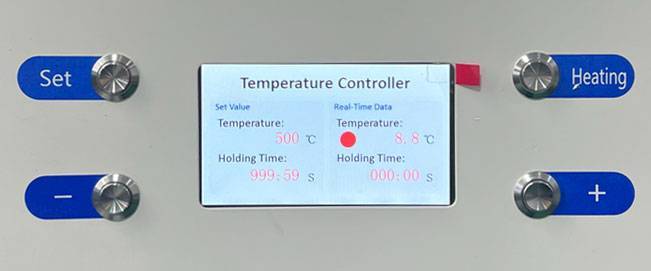
Water Permeability Testing
Water permeability testing is a fundamental quality assurance step, especially for molds used in the production of materials that require high precision and durability. This test evaluates how effectively a mold can resist the penetration of water under pressure, which is crucial for preventing defects such as leaks and structural weaknesses.
One common method for testing water permeability involves the use of a hydraulic press. The sample is weighed and placed in a dialysis bag filled with a dissolution medium, then submerged in the press's vessel. The sample is subjected to forces ranging from 1 to 10 tons, repeatedly over time, to ensure thorough mixing with the dissolution medium. This process helps in calculating the amount of material released from the system and further breaks down particles for more accurate results.
Quality Checks for Mold Durability
Beyond water permeability, several other quality checks are essential to ensure the longevity and effectiveness of molds. These include:
-
Tensile Stress Minimization: Designing molds to avoid tensile stresses is crucial. This can be achieved by converting tensile stress into compressive stress through appropriate construction and including compressive pre-stressing.
-
Densification and Surface Finish: Good densification and minimal final finishing are key. Green machining is often preferred over final finishing to allow only small and limited machined surfaces, ensuring better overall quality and ease of removal from the mold.
-
Manufacturing-Specific Details: Paying attention to manufacturing-specific details such as ease of removal from the mold, avoiding thin walls, and considering special requirements of individual manufacturing steps like wet and dry pressing, extrusion, sintering, and glazing.
Importance of Quality Testing in Plastic Industries
In the plastic industry, quality testing is not just a procedural step but a critical component that directly impacts customer satisfaction and productivity. Manufacturers use advanced testing techniques and machines to ensure the delivery of high-quality products. These tests include confirming the properties of the plastic, such as carbon content and molecular structure, often using specialized equipment like Muffle Furnaces.
Comprehensive Filter Press Testing
For molds used in filtration processes, comprehensive testing is essential. This begins with preparing the slurry and setting up the filter press with the correct plates and filter cloth. Once the press and sample are ready, the pump is activated, and the press is filled. Filtrate samples are collected and timed until both low flow and maximum pressure conditions are met. For membrane tests, additional steps like cake wash, membrane squeeze, and air blow down are included. Post-test, the filter cake is removed, and cake samples are taken, noting the ease of cake release and the condition of the filter cloth.
Conclusion
Testing and quality assurance are integral to the production of molds, ensuring their durability, reliability, and performance. By employing rigorous testing procedures for water permeability and other quality checks, industries can maintain high standards of product quality, thereby enhancing customer satisfaction and operational efficiency. These practices not only prevent defects but also contribute to the overall success and sustainability of manufacturing processes.
The future of infrared heating flat plate molds is bright, with numerous potential innovations on the horizon. By focusing on enhanced thermal efficiency, the integration of smart technologies, sustainable practices, and advanced manufacturing techniques, manufacturers can push the boundaries of what is possible and create molds that are more efficient, versatile, and environmentally friendly. These advancements will not only improve the performance of infrared heating technology but also contribute to the overall progress of various industries that rely on precise and efficient heating processes.
Related Products
- Vertical Laboratory Tube Furnace
- Special Heat Press Mold for Lab Use
- 1700℃ Muffle Oven Furnace for Laboratory
- Anti-Cracking Press Mold for Lab Use
- Multi-zone Laboratory Tube Furnace
